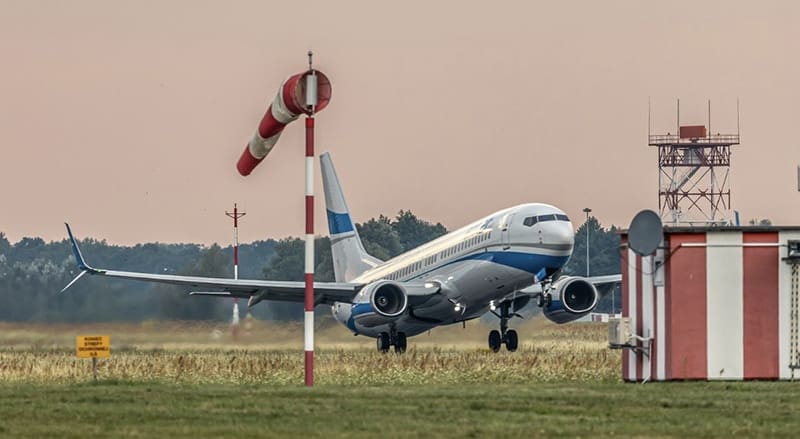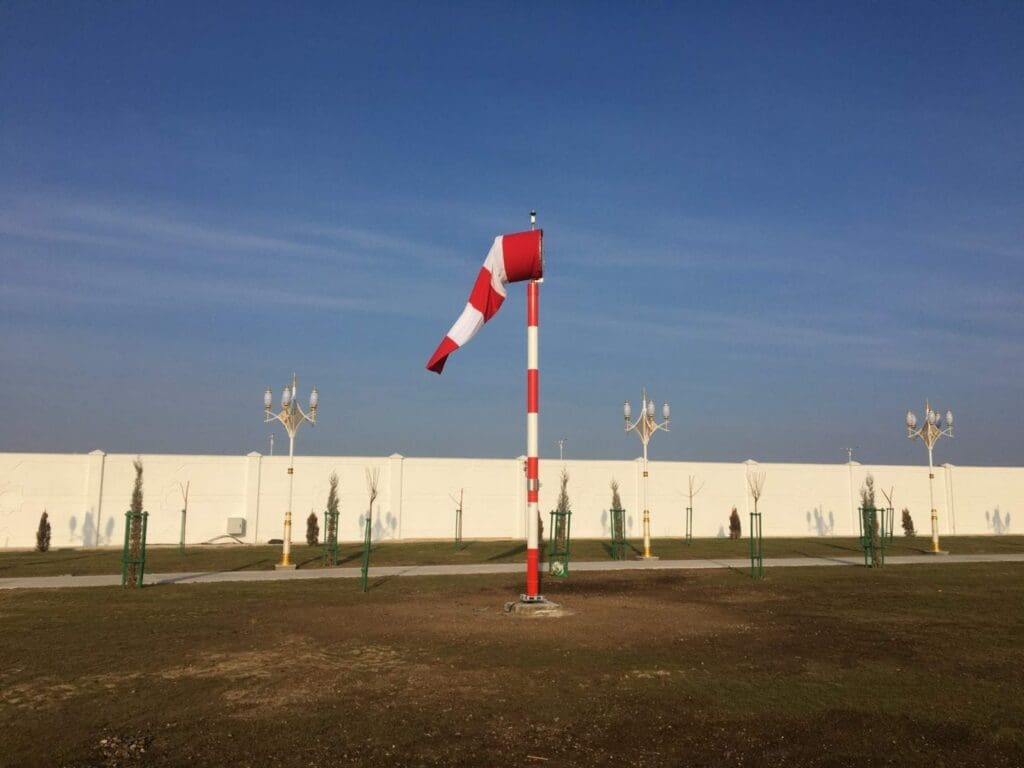Frangible windsock masts play a crucial role in assessing wind conditions and ensuring safe takeoffs and landings for aircraft. Here we highlight key reasons for their importance.
Accurate wind condition assessment
Windsocks provide visual indications of wind direction and approximate speed. This aids pilots, air traffic controllers, and ground personnel in assessing current wind conditions at the airfield.
Frangible windsock masts ensure that wind socks are positioned at an optimal height and location for accurate real-time wind readings. This enhances the reliability of wind data for aviation operations.
Safe takeoffs and landings
Knowing the wind direction is critical for pilots during takeoff and landing manoeuvres. Frangible windsock masts help pilots determine the most suitable runway for operations based on prevailing wind conditions. They can minimise crosswind effects and enhance aircraft control.
Windsocks also assist pilots in assessing crosswind components. This allows them to make informed decisions. Pilots are then able to apply appropriate techniques to maintain safe aircraft handling during crosswind landings or takeoffs. The masts holding windsocks up are therefore a crucial part of this.

Emergency operations
In emergency situations requiring unplanned landings, pilots rely on wind information provided by windsocks to select suitable landing directions and approaches. They are able to consider wind factors in their decision-making for safe touchdown and deceleration.
Helicopter pilots also use windsock information to assess wind conditions near helipads or landing zones. This ensures safe approaches and departures, especially in challenging environments or during critical operations such as medical evacuations.
Compliance and safety standards
Frangible windsock masts are designed to comply with aviation safety standards and guidelines. Compliance ensures that windsock installations meet structural integrity and frangibility criteria to minimise hazards in case of impacts.
Operational efficiency
Frangible windsocks and their masts contribute to efficient airfield operations. They provide clear and reliable wind information to air traffic control, ground crews, and pilots. The data facilitates coordinated movements and reduces delays due to weather-related factors.
Accurate wind assessments, enabled by windsock masts, help pilots establish safety margins. They cam make informed decisions regarding approach speeds, landing distances, and takeoff performance calculations, enhancing overall flight safety.

Why choose Pollite?
Pollite are one of the largest manufacturers of fibreglass (fiberglass) structures and masts in Europe. We supply internally- or externally-lit frangible glassfibre windsock masts that comply with FAA and ICAO requirements. All of our windsocks are manufactured in our facility in Newton Aycliffe, County Durham. They meet ICAO and FAA requirements for size, material and colour. They also meet all of the legal requirements in terms of colour fastness to light. Contact us now to discuss your project requirements.